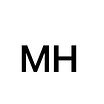Dear Republic,
There is probably no subject that ROL has given less thought to than Instagram-accessible poetry, but, clearly, that’s ROL’s problem. Maryanne Hannan finds herself dazzled by a new poetry anthology in the last entry of the “Best Thing I Read” submissions.
-ROL
DIAMONDS IN THE INSTAGRAM ROUGH
The best book I’ve read all year just became available for you to read today! Unless you’re cooler than I am, and have been following Anonymous’ Instagram account, “Poetry Is Not A Luxury,” and then you know what a blistering bonanza of goodies awaits you. As of this writing, the Instagram account of that name has 5441 posts and 848K followers. A lot of collecting going on! This book pulls together the best of those best, and organizes them according to the seasons and its corresponding moods and life themes.
I’m always on the lookout for good anthologies. Or as I like to call them, relying on my long-ago smattering of Greek, aunt hō lō gee a, equal stress on all syllables. Only in my head, of course, where things fanciful and ersatz can pass for normal. Greek because the first anthology that we know was Greek, compiled by Meleager of Gadara in 60 B.C and named Garland, from which we understand anthology’s original meaning, -logos (story, collection, study) of anthos (flowers). As a side note, Latin coined a parallel term, florilegium, based on the same metaphor, but time awarded the victory to “anthology.”
Despite being a fan of anthologies, I’m often disappointed. Flowers, weeds, branches, thorns, pinwheels, sometimes even dollar store plastic look-alikes exist side by side in many anthologies. Who am I to be disappointed in the annual BAP, but sometimes, I like only a smattering of the poems. Even poetry journals are hit and miss, for me. I rarely keep any anthology by my proverbial bedside or expect that when I open to a random poem, I will be transported for the third or fourth time, as happened with this book.
What is going on here, I have to wonder. I have been reading and (trying to) write poetry almost daily since the ‘90s, but I resort to social media only for market suggestions and the soothing camaraderie offered there by writers facing a block or conquering a block, riding a wave or losing the wave. But, until reading this anthology, I assumed social media sites (other than many great journals, available online) offered a mishmash of poetry, not worth trying to sort through. This people-sourced gathering of moving, meaningful work had eluded me, although, based on the above numbers, that is not the case for nearly a million Instagram users. I am eating humble pie here.
Anonymous has curated a marvel, “curator” being the current preferred word for what we used to call “editor.” Derived from the Latin, curator, an agent (-or suffix) of care-taking (curo,-are, verb) is a more appropriate term for what Anonymous does here. Choosing from the Instagram account, she (well, I’ll go with they) … they loosely organized the poems according to seasons, beginning somewhat counter-intuitively (but it works) with Summer and concluding with poems of Spring. These poems are fresh and lively. In a book dedicated to Audre Lorde and drawing its title from one of Lorde’s most famous essays, every choice rings necessary and deliberate.
For the buoyancy of Summer, try Kate Baer’s poem “Idea”:
I will enjoy this life. I will open it
like a peach in season, suck the juice
from every finger, run my tongue over
my chin.
For the poignancy of Autumn, think Joy Harjo’s poem “Fall Song”":
If I think behind me, I might break
If I think forward, I lose now
Forever will be a day like this
Strung perfectly on the necklace of days
Slightly overcast
Yellow leaves
Your jacket hanging in the hallway
Next to mine.
For the mystery of Winter’s pull, try Danez Smith’s “I’m going back to Minnesota where sadness makes sense”:
have you ever stood on a frozen lake, California?
the sun above you, the snow and the stalled sea—a field of mirror
all demanding to be the sun, everything around you
is light & it’s gorgeous & and if you stay too long it will kill you.
It’s so sad, you know? you’re the only warm thing for miles
the only thing that can’t shine.
And for the hope emblematic of Spring, try Dorothea Lasky’s “I Am the Horse”:
I am the horse people should bet on
I am the person who will likely save you from a fire.
All of the above are contemporary poets who use language like a slingshot. Many of the poems in the book could be considered “accessible,” but only because of their unerring delivery. Others require more comfort with poetic conventions, but it is striking how few poems are from older work. No Shakespeare’s “Shall I Compare You to a Summer’s Day,” even though it is probably available in the public domain by now!
Many of the poets’ names are familiar, but some I did not know at all. The book provides a detailed list of credits, where the poems were originally published, but I went on the Internet and looked up interesting new names, to read their other work and to get familiar with their biography. Here is one simple poem I was particularly taken by — written by Molly Brodak — in its entirety.
How to Not Be a Perfectionist
People are vivid
and small
and don’t live
very long—
In so few words, she captures life’s significance and insignificance; in short, shows how compassion and wisdom might present in a moment. In searching for more poems to read by this author, I was shocked to see she died in 2020, at the age of 39, leaving behind a trail of scandal and struggle that is still being discussed. This is surely an example of what Lorde described in the eponymous essay: “For each of us as women, there is a dark place within where hidden and growing our true spirit rises.” And men, we can assume. And now we have Brodak’s beautiful “flower,’ preserved by Anonymous for our collective memory in this collection of contemporary flowers.
This book, published by Washington Square Press / Atria, is available as a hardcover, paperback, ebook, audio download, and audio CD. But it developed on a social media site, in daily increments, of love and attention. Although I was not party to its emergence, the book version gained added significance as I understood it to be “the people’s poetry.” In the Introduction, Anonymous emphasizes poetry’s early roots as a communal experience of song. Describing the book as “a mixtape I made for you,” they offer the hope readers will often be “returning to these poems as safe house when in need, to sing along, to be broken open, to recoup the energy you need to return to the world.”
“The noise of Love is ever in my ears,” Meleager wrote in that early anthology. It was true for Audre Lorde, and for Anonymous, and for you and me. Not that these poems enshrine smarmy love, but rather the recognition, contained in Megan Fernandes’ “Tired of Love Poems”:
What we tire of is that we never tire of it.
How it guts us. How it fails, then reappears.
I loved this book.
A member of the National Book Critics Circle,
has an M.A. in English Literature and an M.A. in Classics (Latin Literature), both from State University of New York, University of Albany. She has published poetry in numerous journals, including Rattle, Poet Lore, Slant, and Oxford Poetry (UK).







I’m British too (in that sense)… All who like poetry must be somewhat British! Even though I noticed belatedly that it was supposed to be Positivity week on ROL site. I think I clicked that box with my cheerful book endorsement.
The Minnesota poem was probably my favorite in the anthology. I looked up other poems by the author and was not equally moved- which speaks to your album-song distinction.
As to the 180 anthologies, I looked all over my house and couldn’t find either one. I did find Garrison Keillor’s GOOD POEMS, which has more older work than the Instagram anthology. But many good poems, as the title says!
Thank you for your fun response!!!
I love the Molly Brodak lines, and I'm intrigued by your reference to her chaotic life.